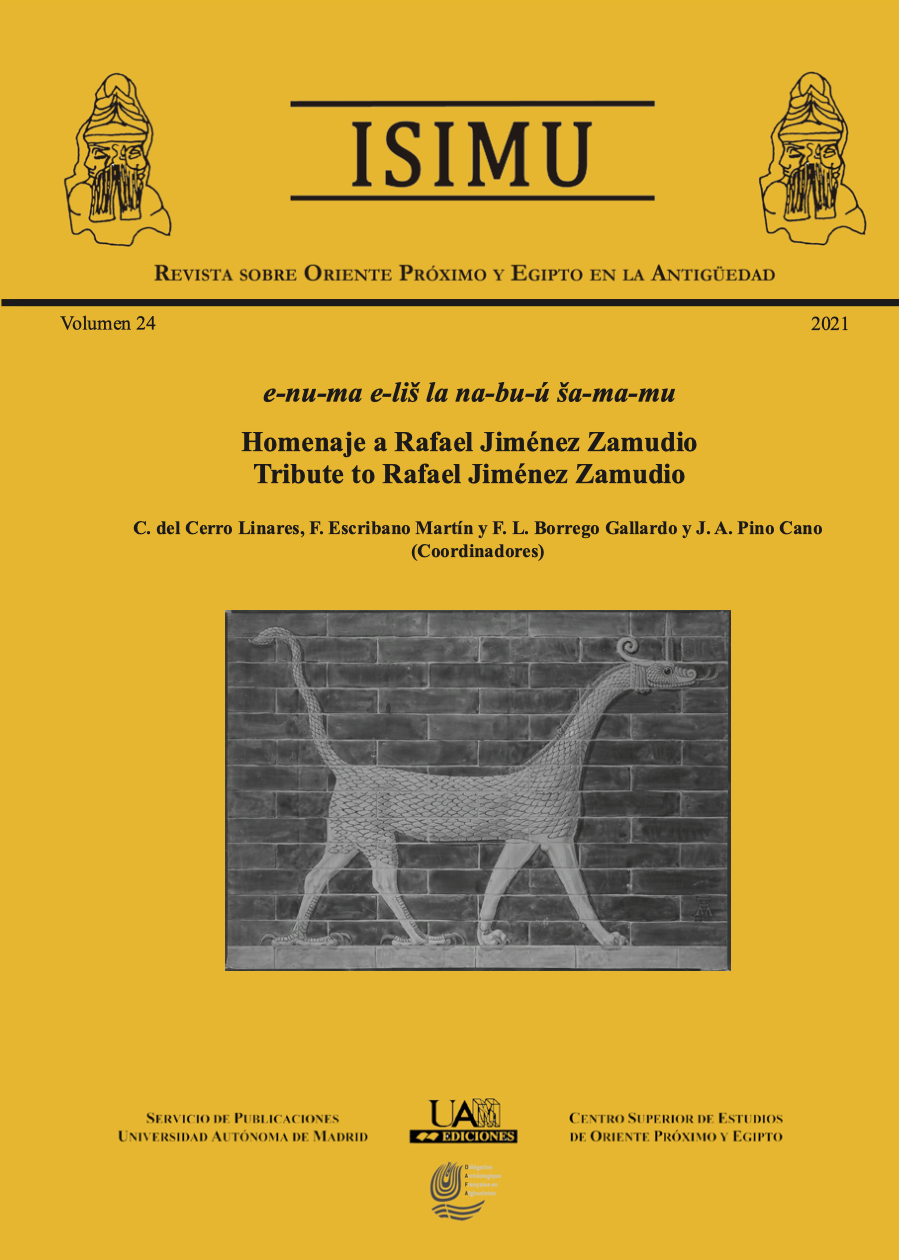Artículos
On possible religious spaces in Izat Kuli (Dahistan). Hypothesis on an aspect of the culture of the Iron Age (1200-400 BC) in the plain of Misrian (Turkmenistan)

Published
July 3, 2023
Keywords:
Central Asia, Iron Age, religious buildings
How to Cite
Córdoba Zoilo, J. M. (2023). On possible religious spaces in Izat Kuli (Dahistan). Hypothesis on an aspect of the culture of the Iron Age (1200-400 BC) in the plain of Misrian (Turkmenistan). ISIMU, 24, 91–107. https://doi.org/10.15366/isimu2021.24.005
Copyright (c) 2022 Joaquín María Córdoba Zoilo

This work is licensed under a Creative Commons Attribution-NonCommercial 4.0 International License.
Abstract
The history and culture of the peoples of Central Asia has become one of the most dynamic poles of research in the Near and Middle East. Archaeological excavations carried out in Izat Kuli and Geoktchik Depe (Turkmenistan) have provided unexpected information about the culture of one of the pre-Achaemenid states, neighboring Iran. At the Izat Kuli site, a structure is appearing, probably a religious space, sanctuary or temple built in the central platform, where public buildings were erected during the Iron Age.
Downloads
Download data is not yet available.